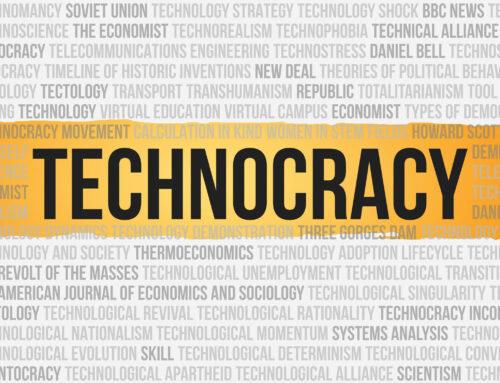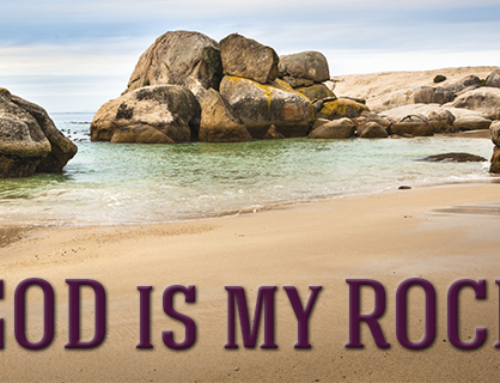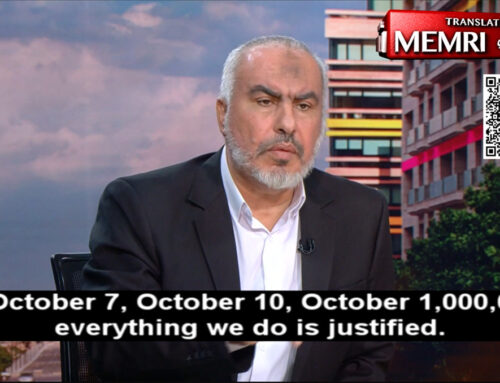The Odious Campaign to Sexualize Children in Public Schools
Condoms, bananas, deviancy, and gender fluidity as education.
Friday, August 20, 2021
By Richard L. Cravatts
Reprinted from FrontPageMag
Richard L. Cravatts, Ph.D., a Freedom Center Journalism Fellow in Academic Free Speech and President Emeritus of Scholars for Peace in the Middle East, is the author of Dispatches From the Campus War Against Israel and Jews.
The current debate about critical race theory (CRT) being promoted in public schools by diversocrats and educators intent on indoctrinating students with one particular view of race revealed one important thing: that teachers, and the powerful unions which represent them, feel it is their right and obligation to inculcate students with a questionable, toxic view which accuses all white students of being complicit in systemic racism and assumes all black students are victims of that oppression and bigotry.
Educators have pretended that the effort to promote CRT is purportedly to make children more tolerant and less race aware, although it is obvious to CRT’s many critics that it does precisely the opposite by making children focus on their skin color and making assumptions about themselves and others based on theirs. More importantly, public schools have decided that they, and they alone, can decide to teach children a radical and discredited view of racism and that this area of teaching should have a prominent place in public school education.
But educators have not limited themselves to indoctrinating students about controversial theories about race and bigotry. Long before CRT had shown up on anyone’s radar, public schools had been widening the focus and content of what was commonly referred to as “sex education,” but which now has blossomed from a single course one might encounter in high school about hygiene and reproduction to reading materials, curricula, lesson plans, activities, and even the incorporation of aspects of sexuality into courses such as history where mention of such topics was normally absent.
The 13-million-member National Education Association, just as it has with CRT, has been vocal in promoting a wide and radical curriculum about sexuality, something it feels, as it does with race, that it has a right and obligation to do. A 2016-2017 NEA resolution, for example, “B-53 Sex Education,” announced that the organization, “. . . believes that the developing child’s sexuality is continually and inevitably influenced by daily contacts, including experiences in the school environment . . . [and] that the public school must assume an increasingly important role in providing the instruction.”
Ignoring the reality that many of the students being taught by its members are elementary and middle school-aged children with little or no prior knowledge about sexuality, the resolution continued that it would assiduously defend every student’s right to knowledge about sexuality, asserting that “The Association also believes that to facilitate the realization of human potential, it is the right of every individual to live in an environment of freely available information and knowledge about sexuality . . . .”
And such instruction, of course, would not be a mere perusal of the “birds and bees” of yesterday’s public education. No, in the infinite moral wisdom of the NEA, “Such programs should include information on … diversity of culture and diversity of sexual orientation and gender identity . . . sexually transmitted diseases including HIV and HPV, incest, sexual abuse, sexual harassment, and homophobia . . . age-appropriate, medically accurate information including lesbian, gay, bisexual, transgender, and questioning (lesbian, homosexual, bisexual, transgender, and queer) issues. This should include but not be limited to information on sexuality, sexual orientation, and gender expression.”
The NEA’s obsession with race is matched with its apparent obsession with sexuality, particularly when it involves abnormal and (often) age-inappropriate discussions concerning relationships, and particularly, now, transgenderism, gender identity, and lesbian, homosexual, bisexual, transgender, and queer issues. At its 2017 convention, for instance, some of the NEA’s New Business Items (NBI’s) included, in addition to NBI 18 which announced NEA’s reckless “refusal to cooperate with ICE (Immigration and Customs Enforcement),” two additional items, NBI 49 which “call[ed] for homosexual advocacy in schools using materials from GLSEN (Homosexual Lesbian Straight Education Network)” and NBI 55 which “focuse[d] on a ‘Gender-Inclusive Schools Toolkit’ for use in affirmation of gender diversity.”
And in language that is not coincidentally similar to sentiment expressed by the NEA about how they would insulate teachers and initiate lawsuits against critics of CRT activity in the schools, the organization anticipated, and attempted to proactively diffuse, opposition to controversial teaching when they added the statement that “Educators and health professionals must be qualified to teach in this area and must be legally protected from censorship and lawsuits.” [Emphasis added.]
The NEA is not alone in the push to sexually indoctrinate students and make them question, even in elementary school grades, their genders. A 2019 report by the Heritage Foundation, “Sexual Ideology Indoctrination: The Equality Act’s Impact on School Curriculum and Parental Rights,” noted that Schools across the country and around the world have attempted to implement curricula that teach students the nonscientific belief that gender is fluid and subjective, and that traditional beliefs about marriage and family are rooted in bigotry.” The report suggested that passage of H.R.5, The Equality Act, was troubling, that when “signed into law, parents can expect to see this radical ideology incorporated into schools across the nation—beginning with sex education, and then extending further across subject areas. It is clear that these groups mean to extend their efforts beyond sex education, which is subject to close scrutiny and protected by parental opt-out policies, in order to more effectively integrate their ideology across curricula.”
The Equality Act extended Title IV of the 1964 Civil Rights Act “to include sexual orientation and gender identity (SOGI) as protected classes leading to potential changes to curricula in public schools, requiring texts to affirm and promote radical views of gender and sexuality,” the report observed. More troubling, according to the authors, is that “The introduction of SOGI curricula, which promote the idea that gender is fluid and subjective, will exacerbate this situation, with vulnerable teenagers being taught that they can change their sex at will and that doing so is a sure path to acceptance among their friends and support from teachers and administrators.”
It should come as no surprise, then, that books and lesson plans are replete with stories about children who question their gender, switch genders according to whims, want to be accepted completely for their actions (even if their parents object)—all while being coddled and encouraged by woke teachers with an agenda to introduce every aspect of sexual, gender, and physical identity to children as young as kindergarteners. And the NEA has worked closely with activist groups, such as the Human Rights Campaign (HRC), to develop SOGI curricula and teaching materials to introduce into school systems, including the co-sponsored “National Day of Readings Supporting Transgender and Gender-Expansive Youth,” HRC’s website is bursting with lesson plans and activities designed to inculcate very young children with the non-scientific notion that gender is fluid and not assigned at birth. Full of the leftist jargon that animates so many campuses now, one example of this indoctrination is an activity called “Gender Snowperson: Understanding Gender Identity,” which exposes children to the vocabulary of wokeness. Teachers are instructed to “write these words: Cisgender, Transgender and Non-Binary. Define these words for your students. Explain that when your gender identity—who you are and how you feel—is different than the what the doctors/midwives said when you were born—girl, boy, or intersex—you might identify as transgender or non-binary (both or neither).”
Another HRC lesson plan involves a children’s book, I Am Jazz, a book written to be used by grades K-5, which describes a transgender transformation “based on the true story of a transgender girl named Jazz Jennings.”
“Ensure that every child in your classroom is allowed to express themselves however they want, regardless of their gender identity or expression—or any aspect of their identity that may be considered by other students to be “different,” teachers are instructed when using the book. And then, in language that is highly questionable and based more on ideology than fact, teachers are told to “Understand that gender is a spectrum, not a binary [emphasis added], and that we all express ourselves in many different ways along that spectrum. Each child is an individual with their own unique expression of who they are in the world.”
Another book used in an HRC lesson plan is Julian is a Mermaid, a story of a little boy who dresses up extravagantly as a mermaid and has as its purported purpose to help students understand gender expression. The instructions to teachers are telling because they suggest that what is being taught in the classroom might not be accepted, or appropriate, at home under the eyes of concerned parents. “This is a good time to message students that at [NAME OF SCHOOL], everyone gets to wear what makes them feel happy and comfortable without being teased. We all get to BE WHO WE ARE without being teased or bullied by anyone else,” the lesson plan suggests. “If you have students who say that they have family members who say that boys can’t be mermaids (or don’t wear dresses),” in other words, if a parent tries to be realistic about the gender of his or her child, “let your students know that home and school can be different. One response can be, ‘Home and school can be different.’”
Promoting gender dysphoria is not the worst of it, though. Books, lesson plans, and other teaching materials promote without question homosexual sex; masturbation; anal, oral, and vaginal sex; the use of condoms and dental dams; aberrant sexual behavior; and that a child can choose to be heterosexual, bisexual, homosexual, pansexual, asexual, or questioning.
Apologists for critical race theory in schools profess that their only intention is to promote tolerance and end racism. But the efforts so far, which label white children as racists and oppressors and black children as victims and oppressed by white supremacy, seemed to have revealed a desire on the part of educators to promote a radical, ahistorical ideology that has less to do with tolerance and more to do with vilifying whiteness and condemning it to perpetual critique because of its malignant nature.
In teaching about sexuality and gender in schools, educators have similarly decided that they should, and can, decide what children should be exposed to and that the values and behavior of children as they navigate through their own sexual identities should be shaped by activist educators with the goal of question and breaking down long-standing mores and social values.
“While teaching students to treat others with dignity is a worthy goal,” the Heritage Foundation report observed, “the true aim of SOGI curriculum is not to encourage respect but to inculcate a particular ideology regarding sex and gender, risking confusion and conflicts with parents’ values.”







Leave a Reply, please --- thank you.